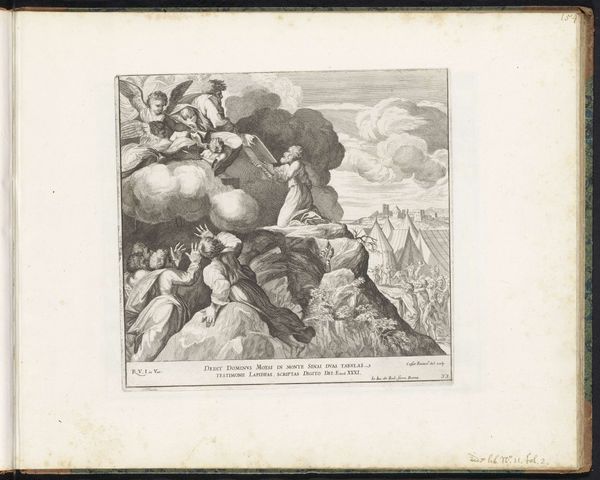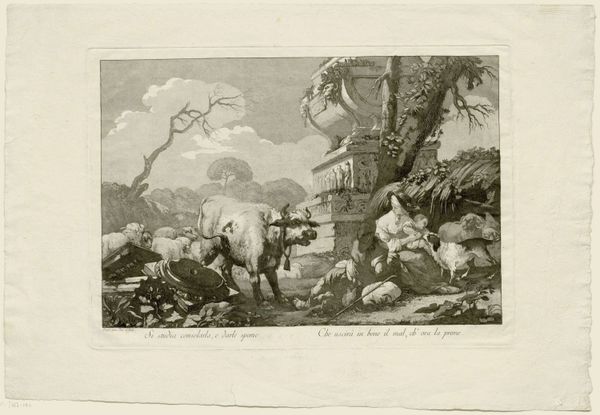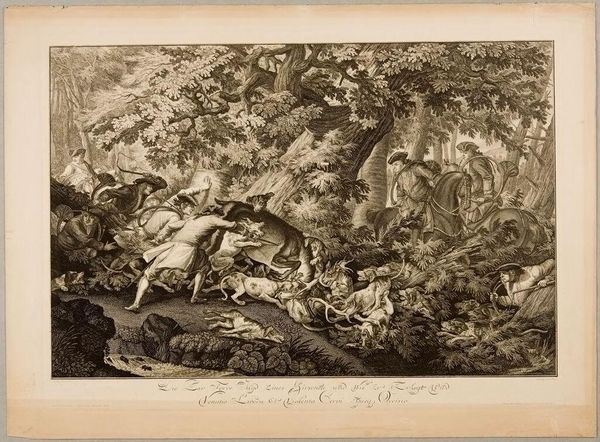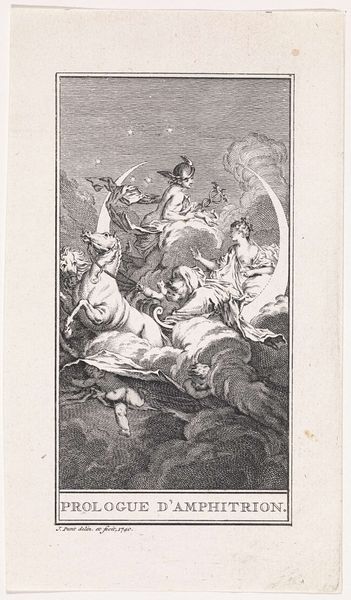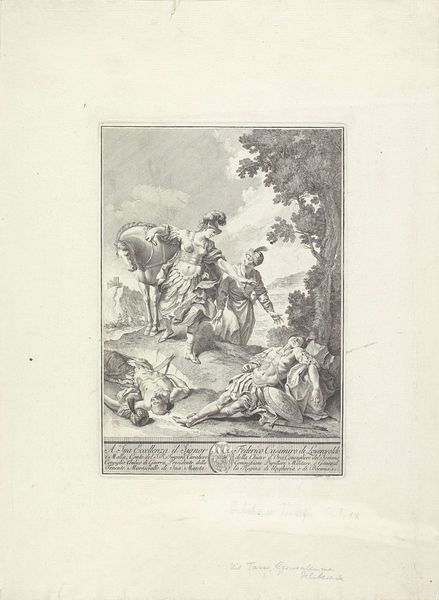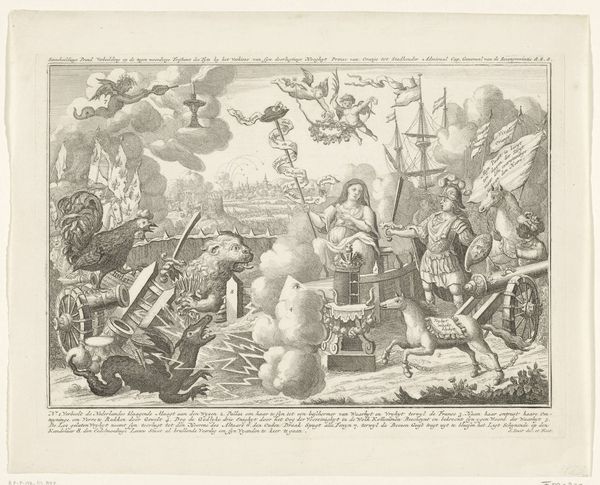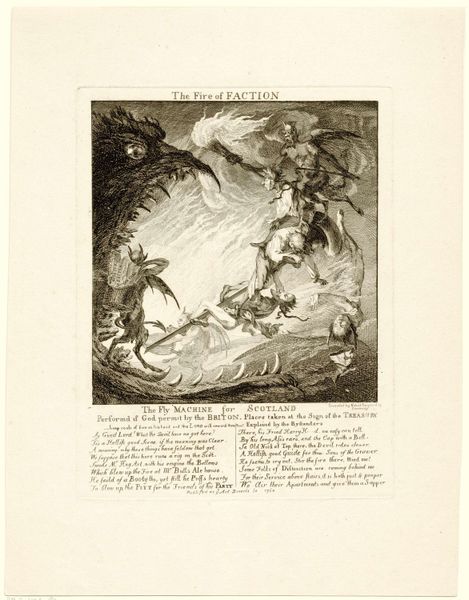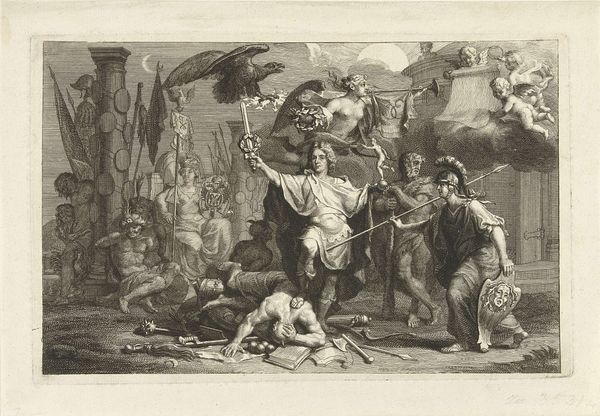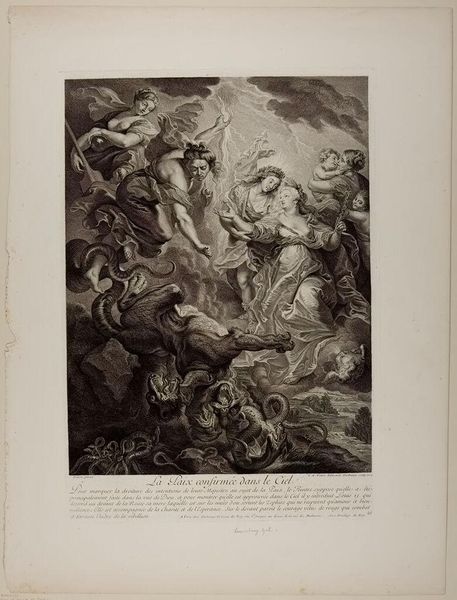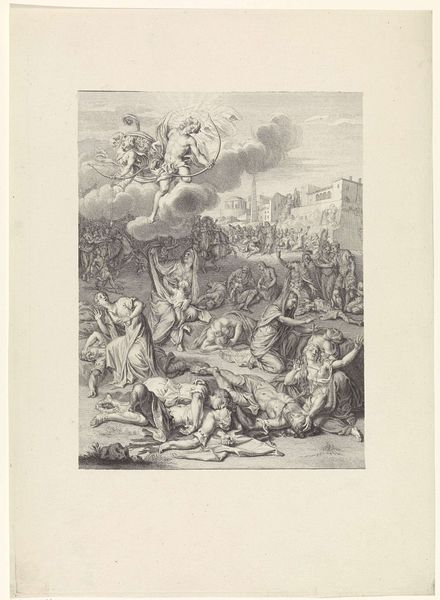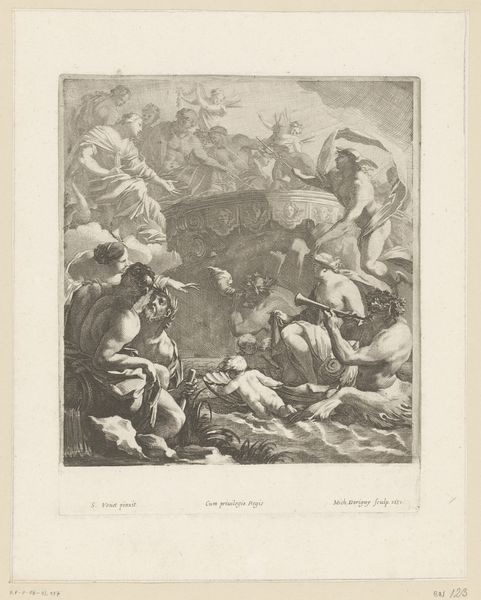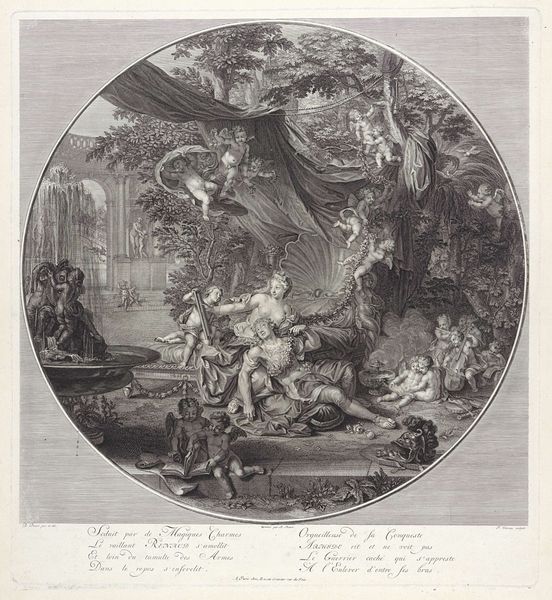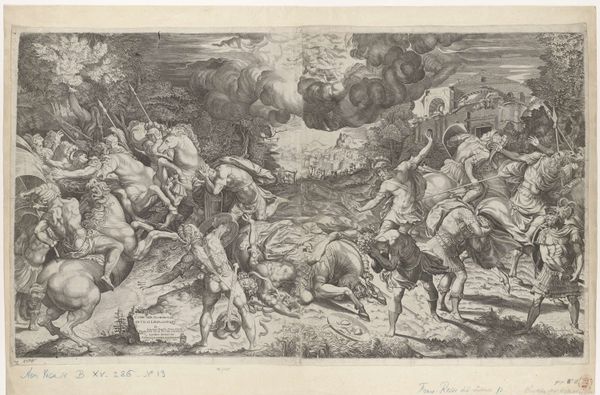
print, engraving
#
baroque
# print
#
landscape
#
figuration
#
history-painting
#
engraving
Dimensions: height 359 mm, width 426 mm
Copyright: Rijks Museum: Open Domain
Curator: Joseph Mulder's "Annunciation to the Shepherds," an engraving dating from between 1711 and 1728, depicts a pivotal biblical scene. Editor: The initial impression is striking. The stark contrast between light and shadow gives it such a dramatic feel, almost theatrical. The composition is divided into earthly and celestial realms so elegantly. Curator: Exactly! The piece places vulnerable shepherds at the heart of a divine announcement. Mulder’s focus on these humble figures draws a powerful parallel to contemporary societal hierarchies. Consider how this scene, traditionally one of elite interpretation, is re-contextualized to empower those marginalized. The angel does not address kings, but working people. Editor: The visual weight of the angel, contrasted against the small shepherd scene emphasizes their insignificance when confronted by a divine event. Note how the bright rays serve to both illuminate and obscure elements. How intentional. The swirling clouds also add a sense of dynamism. Curator: Indeed. Furthermore, analyzing the positioning of the shepherds, the postures of surprise and awe can be viewed as a study in power dynamics; they, like many in Mulder's time, would be subject to the dictates of the elite, mirroring their spiritual encounter. This intersection is fascinating, showing submission alongside divine intervention, suggesting potential liberation or merely reinforcing societal structures. Editor: Semiotically, even the placement of the livestock speaks volumes. The passive observation suggests a natural order, disrupted, and renewed. The artist’s use of light is so purposeful that even in what should be perceived darkness, we find clarity. Curator: Absolutely. "Annunciation to the Shepherds" invites us to examine both the divine and earthly with critical eyes, and reveals much about power, belief, and social hierarchy through an artistic lens. Editor: Mulder masterfully directs the gaze using baroque drama and offers an invitation for reflection. I admire the composition, the semiotic dance, that still provokes discussion.
Comments
No comments
Be the first to comment and join the conversation on the ultimate creative platform.
